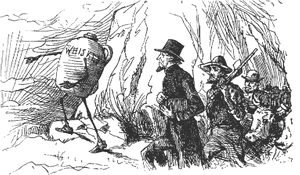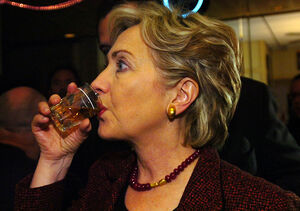
The art of distillation began with the Babylonians in Mesopotamia (in what is now Iraq) from at least the 2nd millennium BC, with perfumes and aromatics being distilled long before potable spirits. Distillation was brought from Africa to Europe by the Moors, and its use spread through the monasteries, largely for medicinal purposes, such as the treatment of colic, palsy, and smallpox.
Between 1100 and 1300, distillation spread in Ireland and Scotland, with monastic distilleries existing in Ireland in the 12th century. Since the islands had few grapes with which to make wine, barley beer was used instead, resulting in the development of whisky. In 1494, as noted above, Scotland’s Exchequer granted the malt to Friar John Cor; this was enough malt to make about 1500 bottles, so the business was apparently thriving by that time.
James IV of Scotland (r. 1488-1513) reportedly had a great liking for Scotch whisky, and in 1506 the town of Dundee purchased a large amount of Scotch from the Guild of Surgeon Barbers, which held the monopoly on production at the time. Between 1536 and 1541, King Henry VIII of England dissolved the monasteries, sending their monks out into the general public. Whisky production moved out of a monastic setting and into personal homes and farms as newly independent monks needed to find a way to earn money for themselves.
The distillation process at the time was still in its infancy; whisky itself was imbibed at a very young age, and as a result tasted very raw and brutal compared to today’s versions. Renaissance-era whisky was also very potent and not diluted, and could even be dangerous at times. Over time, and with the happy accident of someone daring to drink from a cask which had been forgotten for several years, whisky evolved into a much smoother drink. With a licence to distill Irish whiskey from 1608, the Old Bushmills Distillery in the north coast of Ireland is often regarded as being the oldest licenced whiskey distillery in the world.
In 1707, the Acts of Union merged England and Scotland, and thereafter taxes on it rose dramatically.
After the English Malt Tax of 1725, most of Scotland’s distillation was either shut down or forced underground. Scotch whisky was hidden under altars, in coffins, and in any available space to avoid the governmental Excisemen. Scottish distillers, operating out of homemade stills, took to distilling their whisky at night, when the darkness would hide the smoke rising from the stills. For this reason, the drink was known as moonshine. At one point, it was estimated that over half of Scotland’s whisky output was illegal.

Hillary Clinton, ostensibly drinking whiskey
In America, whisky was used as currency during the American Revolution. It also was a highly coveted sundry and when an additional excise tax was levied against it, the Whiskey Rebellion erupted in 1791.
In 1823, the UK passed the Excise Act, legalizing the distillation (for a fee), and this put a practical end to the large-scale production of Scottish moonshine.
In 1826 Robert Stein invented an effective continuous still, and in 1831, Aeneas Coffey refined it to create the Coffey still, allowing for cheaper and more efficient distillation of whisky. In 1850, Andrew Usher began producing a blended whisky that mixed traditional pot still whisky with that from the new Coffey still. The new distillation method was scoffed at by some Irish distillers, who clung to their traditional pot stills. Many Irish contended that the new product was, in fact, not whisky at all.
By the 1880s, the French brandy industry was devastated by the phylloxera pest that ruined much of the grape crop; as a result, whisky became the primary liquor in many markets.
During the Prohibition era lasting from 1920 to 1933 in the United States, all alcohol sales were banned in the country. However, the federal government made an exemption for whisky that was prescribed by a doctor and sold through licensed pharmacies. During this time, the Walgreens pharmacy chain grew from 20 retail stores to almost 400.